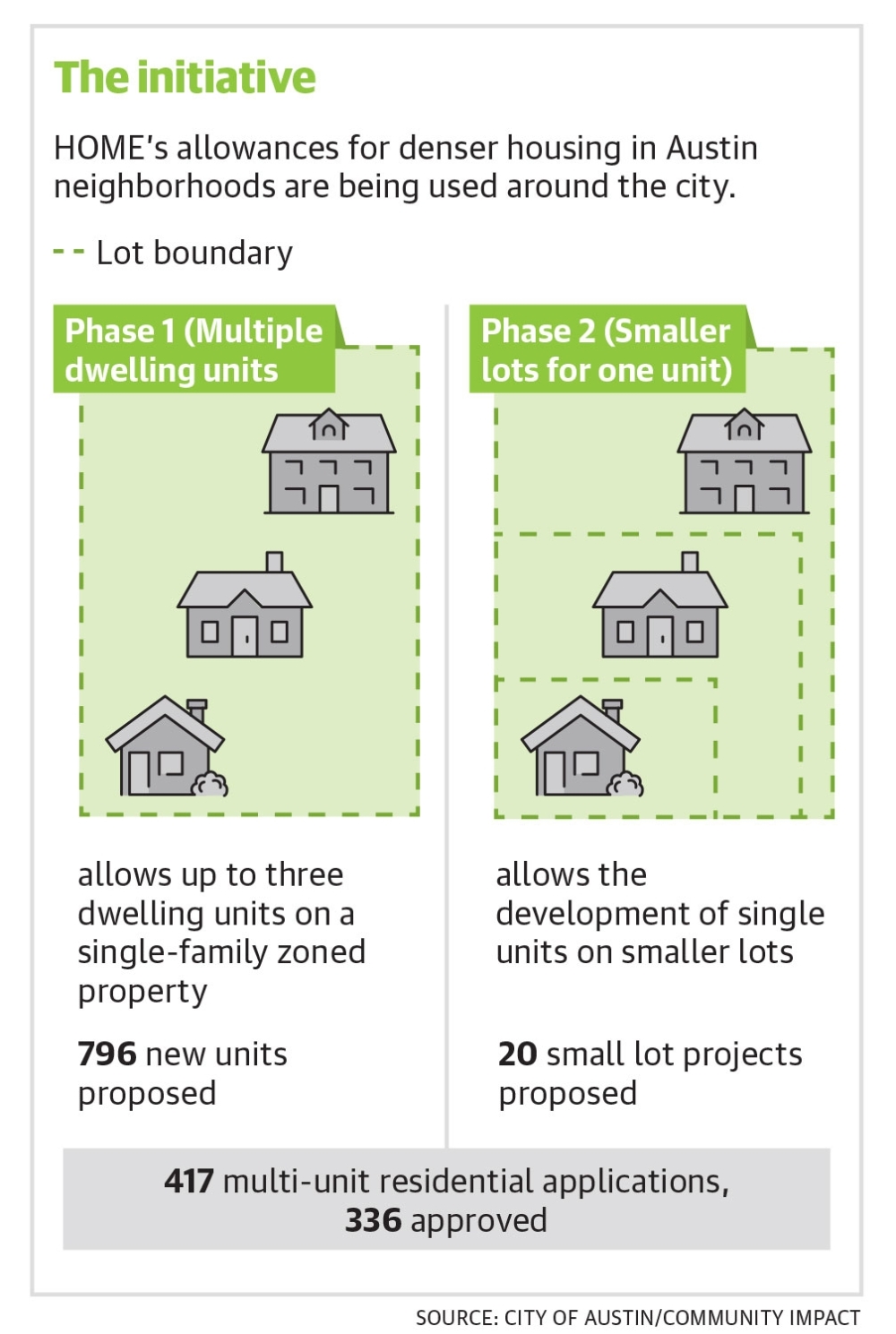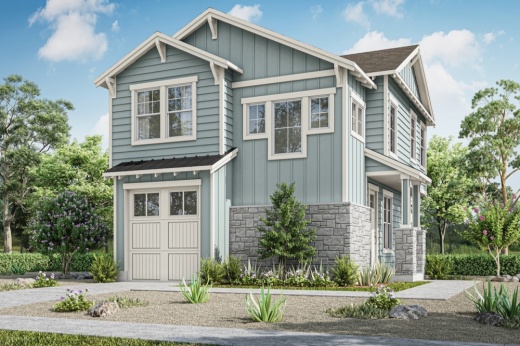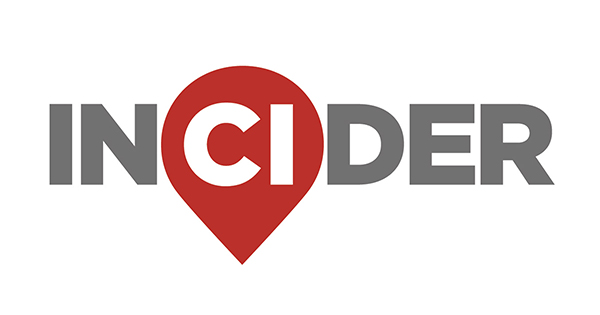The overview
Under the two-part program, supported by most of City Council in late 2023 and last spring, multiple housing units can now be built on single-family lots and individual homes can go on smaller lots than previously allowed. The city began accepting single-family building plans with up to three units under HOME's first phase early last year while subdivision and small lot plan reviews under HOME 2 started later that summer.
More than 400 applications for multi-unit HOME 1 projects were filed as of mid-May, with the majority new builds. HOME included a provision to encourage preservation of existing housing alongside new additions but only five projects have taken advantage so far.
Less than two dozen HOME 2 project plans have been submitted, alongside five property subdivisions for smaller lots.
The Development Services Department plans to provide updated data on construction taking place under HOME in July.
The impact
Local builder Ash Creek Homes is one of many to use HOME since its launch last year, and CEO Jenna Edge said the policy expanded the company's use of 2.4 acres of South Austin property where 20 duplexes were originally planned. Under HOME, Ash Creek's Drew Lane community will now bring 28 standalone homes to an area Edge said is not seeing much new development.
“The new policy allows us to do more units, more houses, whereas before we could really only do two houses per lot," she said. "From a product perspective, buyers always prefer detached homes over attached. ... We just decided that smaller homes targeting the Gen Z first-time homebuyers is really a good product for that area."
The two-bedroom, 2.5-bathroom Drew Lane homes all feature yards and parking spaces, and Edge said HOME allowed the residences to be sold at a more accessible level.
"If you can spread the cost of a piece of land over three homes instead of two or one, it really does help the affordability. We’re able to build these 28 homes and sell them in the $400s in the city of Austin," she said. "If you look from a new construction perspective, you won’t find that."
The approach
HOME was one of the most contested policy changes at City Hall in recent years. Many residents supported easing historic building restrictions to allow more varied and potentially less costly housing. Others worried it’d increase real estate speculation and redevelopment, disrupting neighborhoods and spurring gentrification.

A city task force formed to find ways to help low- and moderate-income homeowners use HOME shared its first recommendations this spring, and further proposals are expected to be released in the near future. Staff suggested new public education about HOME, expanding the city’s displacement navigation assistance, and launching new financial education and homeowner protection programs to “ensure homeowners remain in control of their assets and better understand financial options,” they wrote in a May memo.
Staff said that work would cost $100,000, to be considered during budgeting this summer.
City reporting on HOME’s impacts has routinely been delayed, with a six-month progress report released in late 2024. A required one-year impact analysis due in February has yet to be released; it's being finalized without a confirmed release date, according to DSD.
A review of an “equity overlay” pushed for by some HOME opponents to limit the policy's effects in displacement-risk areas also remains in progress while new development under the program continues. That study is expected to be complete this fall, according to the Planning Department.





